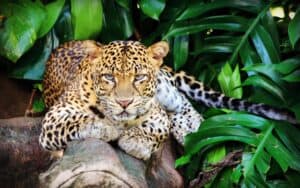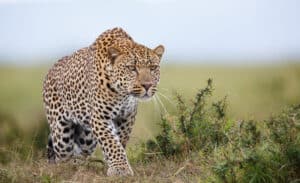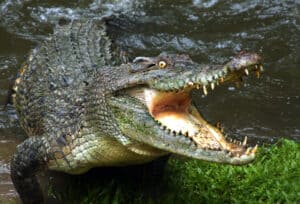Continue reading for our analysis...
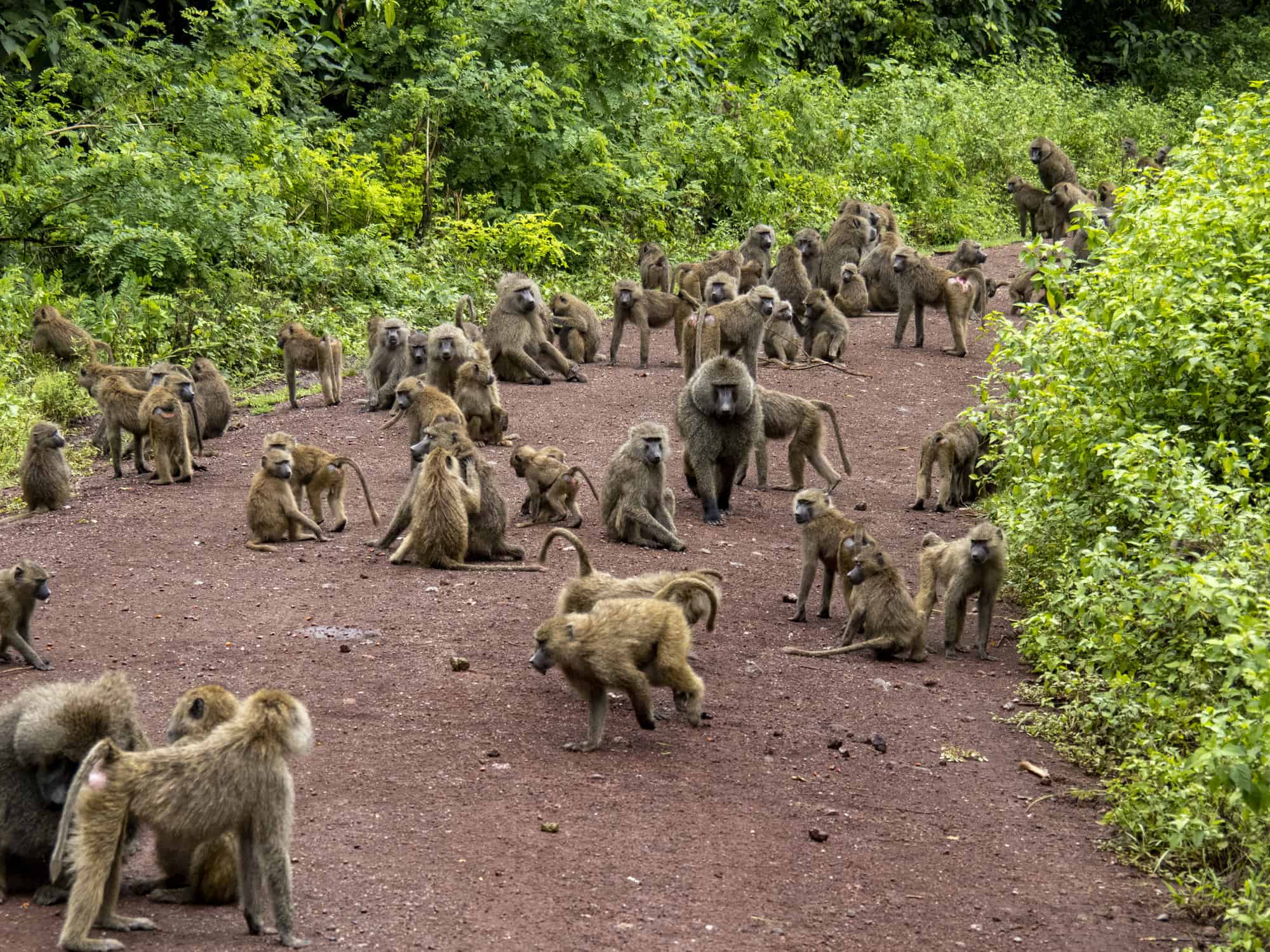
Leopards are explosive apex predators found on the continents of Africa and Asia. While these big cats are considered methodical hunters who stalk their prey silently, they are also opportunistic hunters. That means that they will roll with the punches, so to speak, and take the opportunity presented to them in the moment. This was undoubtedly the case in the clip above.
The leopard in this video crossed paths with a large baboon troop — a whopping 50 members! What this leopard saw as a prime opportunity to pick off an easy target was quickly thwarted by this pack of vigilant primates. The video was captured in the middle of a road in Kruger National Park, in northeastern South Africa — one of Africa’s biggest game reserves.
Is It Normal for Leopards to Hunt Baboons?
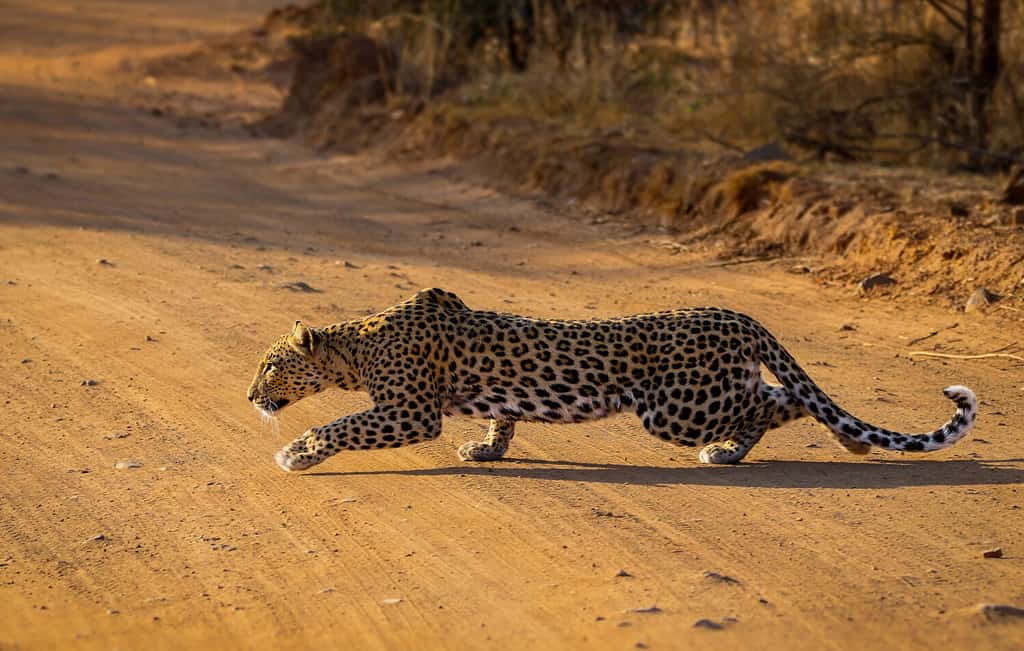
Leopards are savvy yet opportunistic hunters.
©Heinrich Neumeyer/Shutterstock.com
Leopards do hunt baboons, but they comprise a small percentage of their diet. A Leopard typically hunts medium-sized mammals like warthogs and deer. In addition to this, baboons are a challenging target for leopards. Coupled with their vigilance and strength in numbers, baboons are highly aggressive mammals. Baboons are powerful primates equipped with large, sharp canines. Males are nearly double in size to females and can weigh up to 100 pounds.
Are Baboons Always This Alert?
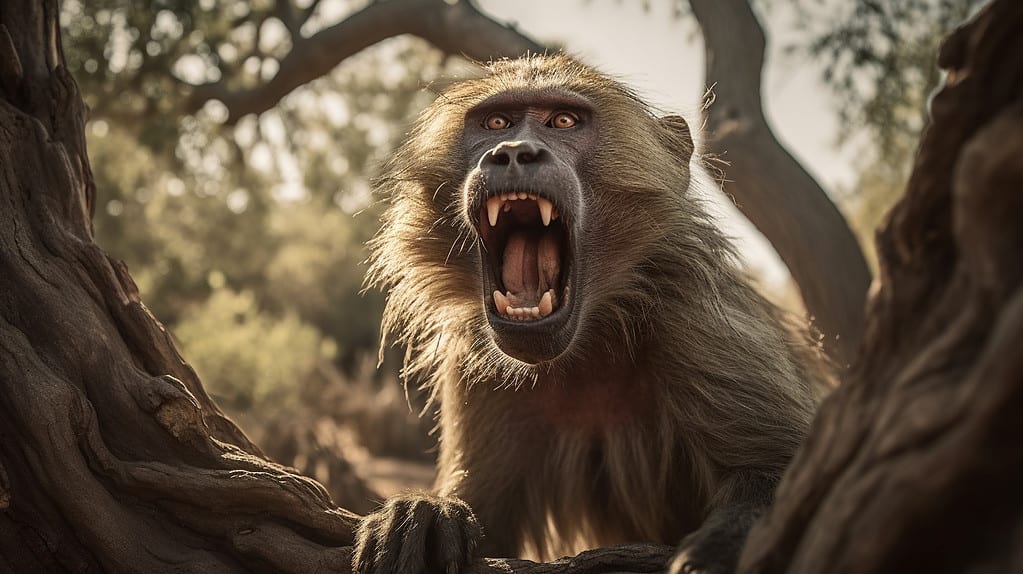
Baboons are on high alert during the day, especially in the face of a threat like a leopard. They will engage in mobbing, circle their enemy, and let out loud, intimidating shrieks. In groups of this size and collective strength that are this unified, they could easily overcome a leopard and even kill it — a creature that is powerful but outmatched in a situation like in the above video.
Leopards are solo hunters who live solitary, so going after a group of this magnitude is a risky proposition. As we saw in the footage, the leopard made a wise decision by fleeing the scene. Baboon troops pose less risk for leopards at night when they are resting in trees and more scattered. Additionally, the vision of the leopard improves at night, and they are excellent climbers. As a result, they can exploit the vulnerabilities of these troops, and the tables turn.
Thank you for reading! Have some feedback for us? Contact the AZ Animals editorial team.




